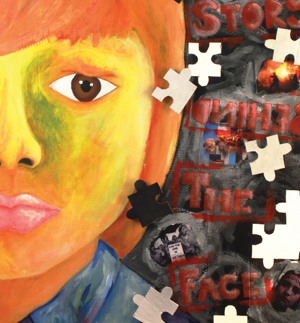Daniel Jones on the education projects around Plymouth’s first ever British Art Show

Having already exhibited in Nottingham, London and Glasgow, the British Art Show 7’s final stop in Plymouth this September is a significant coup for the city, and the catalyst for a culture agenda aimed at restoring the credibility of an area facing above-average levels of deprivation and unemployment. Against this backdrop, the schools and community engagement programme run by the Plymouth Visual Arts Consortium (PVAC) is integral to the show’s success. Plymouth has a lot to prove, not only to Hayward Touring (the Southbank Centre-based organisers of the Show) but also to its own population, many of whom have little, if any, experience of contemporary art.
“I know kids that have never even been to the beach, let alone to an art gallery,” says Kim Wide, Community Curator of the ‘Take A Part’ programme, based in one of Plymouth’s most deprived areas. The British Art Show has been used to kickstart a series of artist-led workshops. PVAC has also commissioned one of the British Art Show 7’s most high profile artists – the sculptor Brian Griffiths – to produce a piece of work that can be physically transported into communities. “We want to give them a flavour of the artwork, and then an incentive to come and see it,” Kim explains.
Elsewhere in the city, the British Art Show is giving younger students new opportunities. “Art like this isn’t very good in books. You can’t get the size, scale or texture,” says Jack Griffiths, Head of Art at Lipson Community College, where students have been producing work in response to the London show. Asked if the students actually understand the artwork, he says: “The biggest challenge is for teachers such as myself to be able to pass on the knowledge the students need to access the work. Once that’s achieved it becomes amazingly eye-opening for them. You can show them a Caravaggio and they can appreciate the beauty of it, but with contemporary art there is so much more for them to relate to.”
Over the next three months, PVAC’s full education and community engagement programme will be rolled out. It is hoped that the British Art Show will set a precedent in Plymouth. Away from the exhibition spaces themselves however, it is also clear that Plymouth’s experience of the British Art Show is already ushering in new levels of community and young people-centred arts activity. “People here will continue to engage with the arts,” says Kim, adding a single proviso, “as long as the arts continue to engage with them.”
Daniel Jones, on behalf of Plymouth Visual Arts Consortium.



